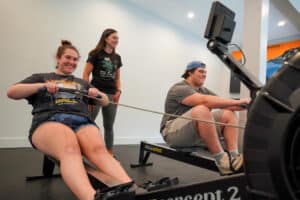The word ‘Hikikomori’ might sound unfamiliar to many, but its implications can be understood across the modern world. Originally a Japanese term referring to young adults withdrawing from society to lead reclusive lives, this phenomenon is gaining ground in the United States.
Recent studies suggest that in Japan, more than one million people live a Hikikomori lifestyle. In the United States, although exact numbers are elusive due to the very nature of the condition, it’s evident from increasing reports by mental health professionals that this trend is growing. The blend of a fast-paced society, increasing mental health issues among young adults, and the allure of digital realms have created the perfect environment for this type of phenomenon.
The Agoraphobia and Social Anxiety Nexus
There’s an intricate web connecting Hikikomori with agoraphobia and social anxiety. Agoraphobia statistics are revealing: almost 2.3 million U.S. adults are likely to be diagnosed with the disorder and many more will experience less debilitating symptoms. This condition strikes individuals with an overpowering fear of specific places or scenarios that might induce panic or where escape routes seem non-existent. The result for many is a progression to total societal withdrawal. On the other hand, social anxiety, which affects more than 17 million people in the United States alone, is characterized by a paralyzing fear of social situations. The dread of negative evaluation and the potential of being at the center of embarrassing situations pushes many young adults to opt for isolation and social withdrawal.
Technology: A Catalyst for Retreat
For an increasing number of young adults, the online realm has become a primary, sometimes exclusive, domain of existence. Research from the Pew Research Center highlighted that 45 percent of teenagers claim they’re online “almost constantly.” Couple this with the rise of e-learning, which saw a 59 percent jump in participation as of 2019, and the post-2020 work-from-home trend, and you have the perfect recipe for reduced real-world social interaction. Further adding to this digital immersion are the endless avenues of online entertainment from gaming to streaming, which seem to fulfill the human need for stimulation without ever requiring physical presence.
Practical Steps for Change
Recognizing the signs of a Hikikomori lifestyle, whether in oneself or in a loved one, is the critical first step. But acknowledgement alone isn’t enough. Concrete, proactive measures are essential to begin a transition from isolation back to societal integration. Here are some practical steps to consider:
- Open Dialogue: Start a conversation. If it’s a loved one, approach the subject gently, without judgment. A feeling of being understood and supported can make a world of difference. If you recognize these tendencies in yourself, speak to someone you trust about your feelings and fears.
- Seek Professional Assistance: Engage with therapists or counselors specializing in social withdrawal, agoraphobia or social anxiety. They can provide valuable insights, coping strategies, and treatment plans tailored to individual needs.
- Limit Digital Exposure: Establish boundaries for screen time. Consider apps or software that limit the use of certain platforms or notify you after a set amount of screen time.
- Engage in Offline Activities: Rediscover hobbies that don’t require a screen. This could be reading, painting, cooking or even just taking walks outside. Physical activities in particular can stimulate endorphin release, which can boost mood and counter feelings of isolation.
- Gradual Social Exposure: Pushing someone directly into social settings can be counterproductive. Instead, start small. This could be a brief visit to a park, a short coffee outing, or attending a small gathering. Over time, as comfort grows, these can be gradually extended.
- Join Support Groups: There are numerous support groups where individuals share their experiences and coping strategies. Just knowing that one is not alone in their feelings can be immensely comforting.
- Educational and Career Pathways: For young adults, considering alternative educational or vocational training that has a mix of online and offline components can be beneficial. It provides a structured environment for social interaction while still being aligned with modern trends.
- Stay Informed: Understanding the phenomenon can alleviate some of the stigmas and fears associated with it. Read articles, watch documentaries, or attend seminars on Hikikomori and related issues. Knowledge is empowering.
- Create a Routine: A structured daily routine can significantly improve mental well-being. Ensure it includes time for self-care, physical activity, and relaxation.
- Celebrate Small Achievements: Every step taken towards reintegrating into society, no matter how small, is an achievement. Celebrate these moments, either alone or with loved ones.
While Hikikomori and its related symptoms might seem overwhelming, it’s not insurmountable. With the right approach, understanding and support system, individuals can navigate their way back into society, rediscovering connections and the joys of shared human experiences.
Skyterra Young Adult: A Beacon of Hope
For those seeking a route out of this isolation, Skyterra Young Adult offers a comprehensive program targeting the very roots of such challenges. Our program provides a safe space to heal. Our Young Adult Program, centered around our Five Pillars of Wellness, provides a helping hand to recovery:
- Self-Care and Stress Management: Hikikomori-related behavior often stems from heightened anxiety and stress. Skyterra Young Adult focuses on cultivating a resilient mindset and teaching stress management techniques, helping young adults manage their anxiety and cope with stressful situations.
- Fitness and Mobility: Engaging in physical activities can increase confidence and reduce symptoms of anxiety. The program provides gentle and gradual exposure to physical movement, encouraging participants to step outside their comfort zones and build a positive association with being active in open spaces.
- Culinary and Nutrition: Nutrition plays a role in managing anxiety. Skyterra Young Adult educates participants about the impact of diet on mental health, teaching them to make food choices that support their emotional well-being and overall recovery.
- Recreation and Adventure: Overcoming hikikomori involves gradually facing fears and expanding comfort zones outside the safety of home. The Skyterra Young Adult program offers carefully structured outdoor activities that challenge participants in a supportive environment, helping them build confidence and reduce avoidance behaviors.
- Mindfulness and Yoga: Mindfulness practices and yoga can enhance emotional regulation and reduce anxiety symptoms that are the root issue of hikikomori. These practices help young adults stay present, manage anxious thoughts, and develop relaxation techniques they can use in triggering situations.
While the rise of Hikikomori in the United States paints a concerning picture, programs like Skyterra Young Adult shine a light on recovery paths for those who have tried, and failed, to overcome their issues at home. By holistically addressing the root causes and providing a supportive environment, Skyterra can offer hope to those young adults trapped in their shells. If you or someone you know resonates with the Hikikomori lifestyle, consider reaching out to us. The journey back to society, to genuine connections, while challenging, is attainable.






